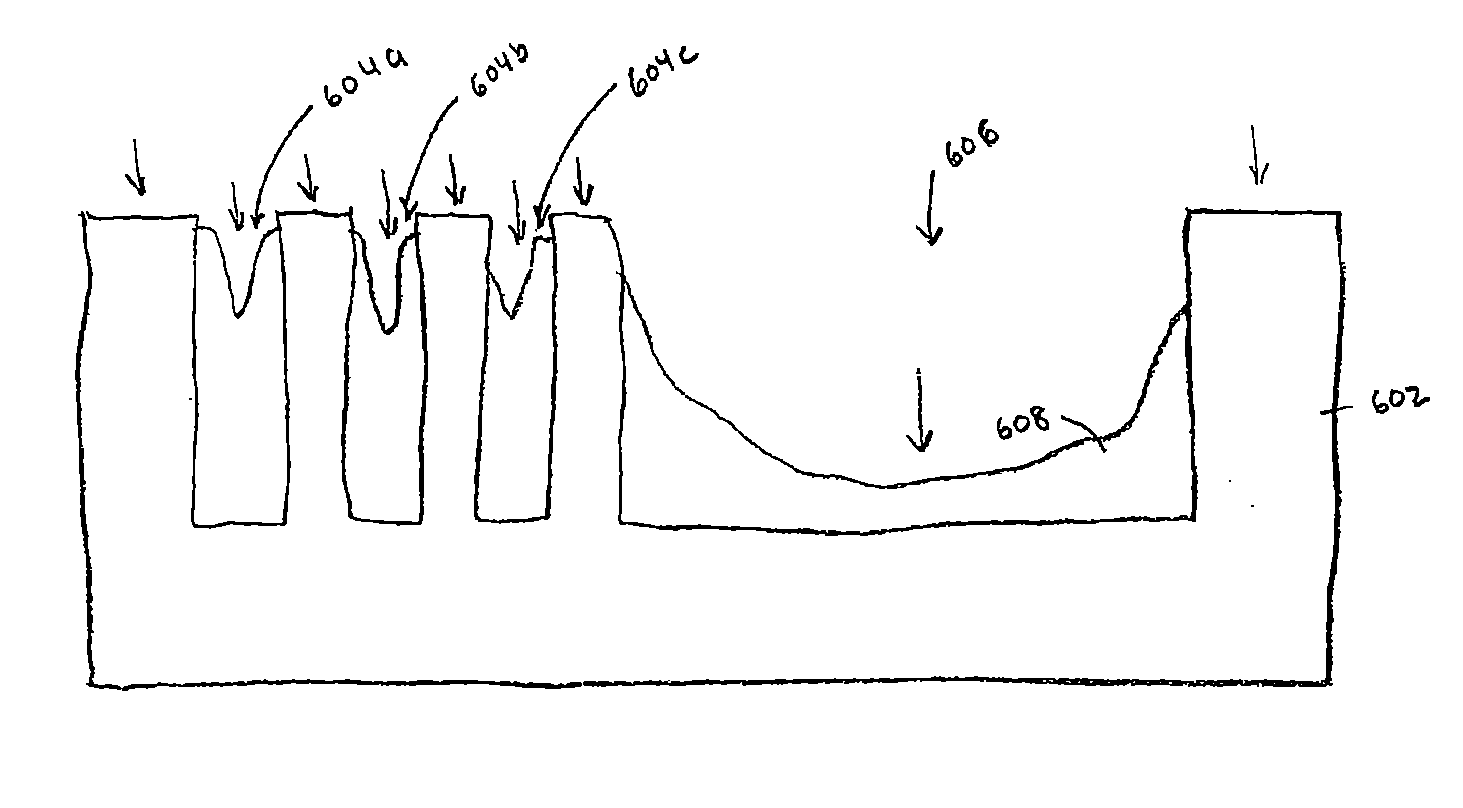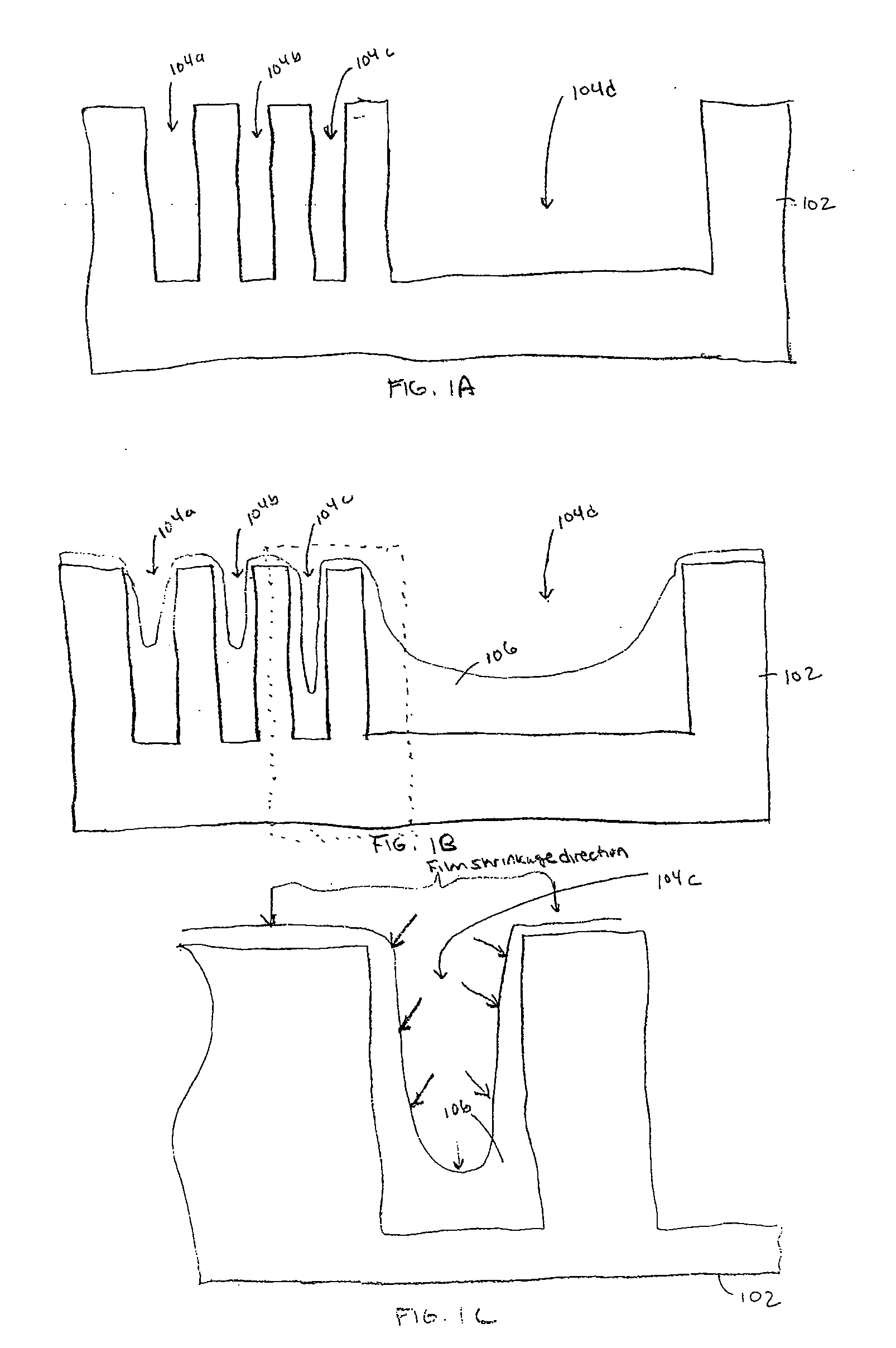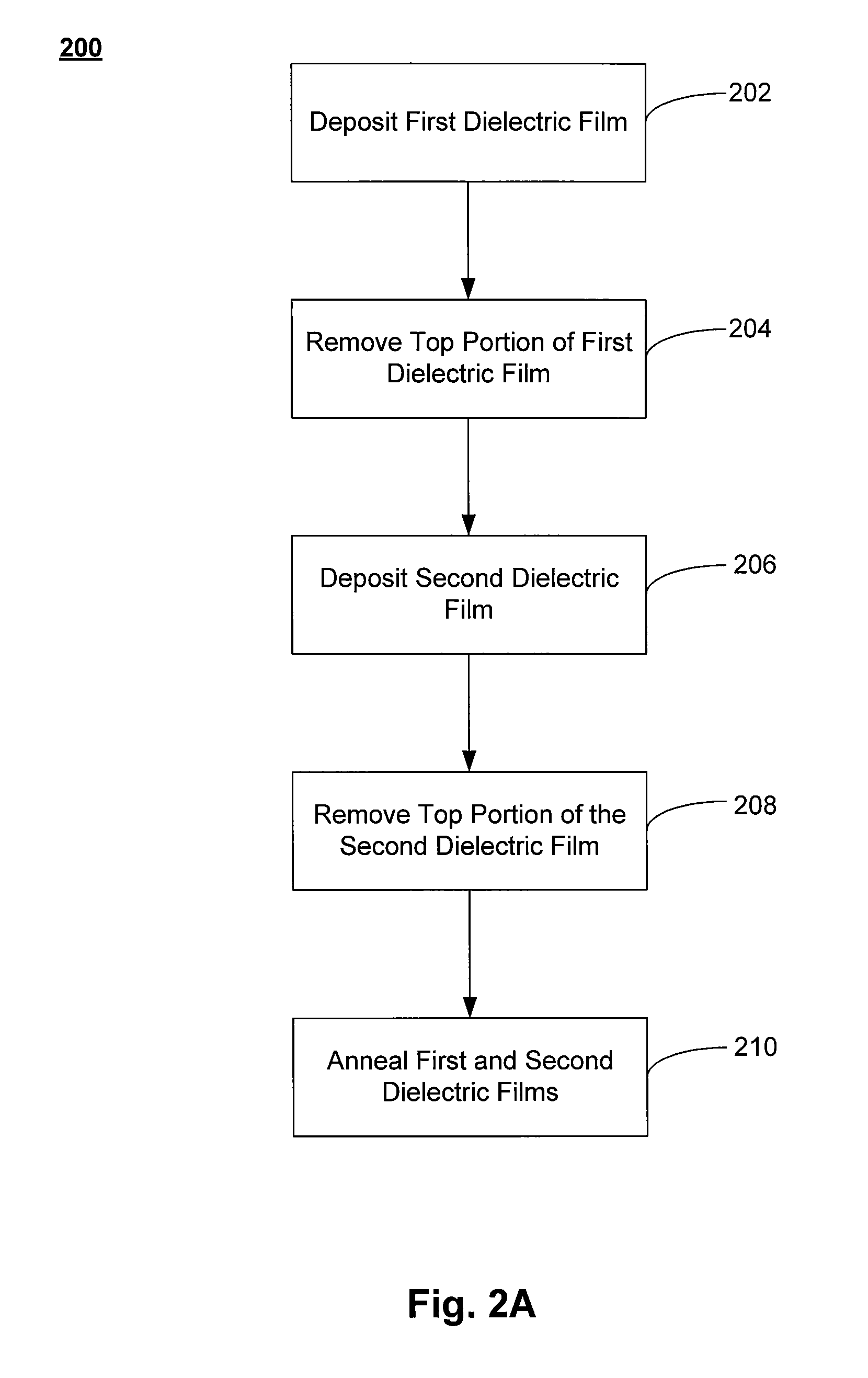Dielectric deposition and etch back processes for bottom up gapfill
a technology of etching back and dielectric deposition, which is applied in the direction of basic electric elements, semiconductor/solid-state device manufacturing, electric apparatus, etc., can solve the problems of increasing the aspect ratio, affecting the operation of the completed device, and progressively more difficult to fill the gaps without leaving voids, so as to reduce the stress level of the dielectric layer and reduce film cracking
- Summary
- Abstract
- Description
- Claims
- Application Information
AI Technical Summary
Benefits of technology
Problems solved by technology
Method used
Image
Examples
Embodiment Construction
[0021] Embodiments of the invention include methods and systems for depositing dielectric materials in gaps and trenches within a surface of a substrate. The dielectric materials include silicon oxide films, which have wide application in the art, but the invention is not limited to any particular film composition, as will be evident from the description. Dielectric films deposited according to the techniques of the invention have excellent gapfill properties and can fill high-aspect-ratio gaps encountered in, for example, shallow trench isolation (STI) structures. Dielectric materials deposited by the methods and systems of the invention are particularly useful in filling gaps in 100-nm or smaller technology (e.g., 65 nm, 45 nm technology, etc.).
[0022] Dielectric depositions may include the formation of flowable dielectrics on the substrate that tend to collect in the bottom portion of a substrate gap or trench during the deposition. Because the flowable dielectric tends to migrat...
PUM
 Login to View More
Login to View More Abstract
Description
Claims
Application Information
 Login to View More
Login to View More - R&D
- Intellectual Property
- Life Sciences
- Materials
- Tech Scout
- Unparalleled Data Quality
- Higher Quality Content
- 60% Fewer Hallucinations
Browse by: Latest US Patents, China's latest patents, Technical Efficacy Thesaurus, Application Domain, Technology Topic, Popular Technical Reports.
© 2025 PatSnap. All rights reserved.Legal|Privacy policy|Modern Slavery Act Transparency Statement|Sitemap|About US| Contact US: help@patsnap.com



